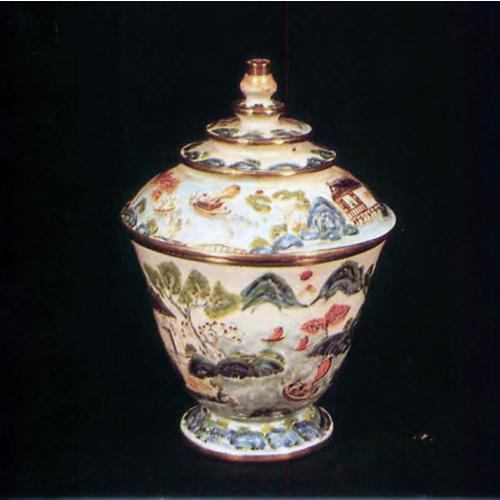Research & Article

Sino-Thai Ceramics
By Natalie V. Robinson
Published on 7 June 2024
Arts and Crafts, Cultural Objects
Location of original sources
Journal of the Siam Society (JSS) Vol. 73 (1985)
Download
Sino-Thai ceramics are wares made in China to Thai specifications, of which there are two major categories: Bencharong and Lai Nam Thong. Bencharong is a type of wucai, or five-color overglaze-enamel ware, that dates from the late Ming period and corresponding Ayutthay period of Thailand but was mainly produced in the 18th and 19th centuries of the Qing period—the Bangkok or Rattanakosin period of Thailand. Lai Nam Thong means gold-washed patterns; on the wares gold appears in the background, on outlines or as accents on motifs. All Lai Nam Thong was produced during the 18th and 19th century. There is a third, much smaller group of Sino-Thai ceramics, which fits neither category. These wares have predominantly Chinese characteristics, but also design and shapes that modify them for the Thai trade. This article provides a detailed cataloging and understanding of all three categories of Sino-Thai wares historically produced, aiming to understand if these ceramics suddenly appeared or evolved from earlier wares. While many questions still demand answers, this in-depth study reveals the numerous influences Sino-Thai wares showcase, thus providing a fascinating synopsis of the history of Thailand. Furthermore, it is argued that Thailand may have contributed to Chinese export ceramics through Indian derived shapes and patterns.